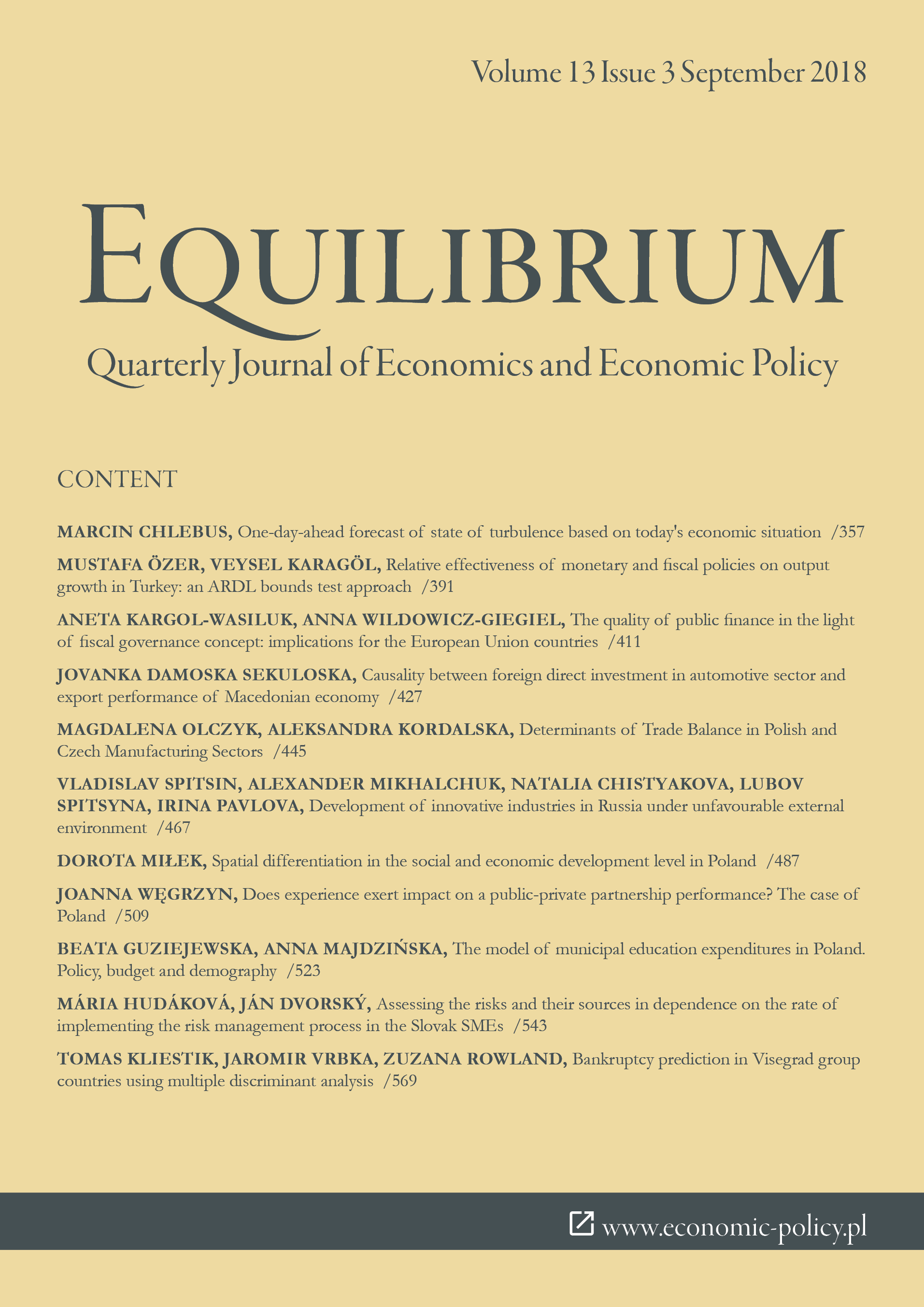Bankruptcy prediction in Visegrad group countries using multiple discriminant analysis
Bankruptcy prediction in Visegrad group countries using multiple discriminant analysis
Author(s): Tomáš Klieštik, Jaromír Vrbka, Zuzana RowlandSubject(s): Economy, Geography, Regional studies, Economic policy, Evaluation research, Policy, planning, forecast and speculation, Present Times (2010 - today)
Published by: Instytut Badań Gospodarczych
Keywords: bankruptcy; prediction model; discriminant analysis; Visegrad group; financial analysis;
Summary/Abstract: The problem of bankruptcy prediction models has been a current issue for decades, especially in the era of strong competition in markets and a constantly growing number of crises. If a company wants to prosper and compete successfully in a market environment, it should carry out a regular financial analysis of its activities, evaluate successes and failures, and use the results to make strategic decisions about the future development of the business. Purpose of the article: The main aim of the paper is to develop a model to reveal the unhealthy development of the enterprises in V4 countries, which is done by the multiple discriminant analysis. Methods: To conduct the research, we use the Amadeus database providing necessary financial and statistical data of almost 450,000 enterprises, covering the year 2015 and 2016, operating in the countries of the Visegrad group. Realizing the multiple discriminant analysis, the most significant predictor and the best discriminant of the corporate prosperity are identified, as well as the prediction models for both individual V4 countries and complex Visegrad model. Findings & Value added: The results of the research reveal that the prediction models use the combination of same financial ratios to predict the future financial development of a company. However, the most significant predictors are current assets to current liabilities ratio, net income to total assets ratio, ratio of non-current liabilities and current liabilities to total assets, cash and cash equivalents to total assets ratio and return of equity. All developed models have more than 80% classification ability, which indicates that models are formed in accordance with the economic and financial situation of the V4 countries. The research results are important for companies themselves, but also for their business partners, suppliers and creditors to eliminate financial and other corporate risks related to the unhealthy or unfavorable financial situation of the company.
Journal: Equilibrium. Quarterly Journal of Economics and Economic Policy
- Issue Year: 13/2018
- Issue No: 3
- Page Range: 569-593
- Page Count: 25
- Language: English

